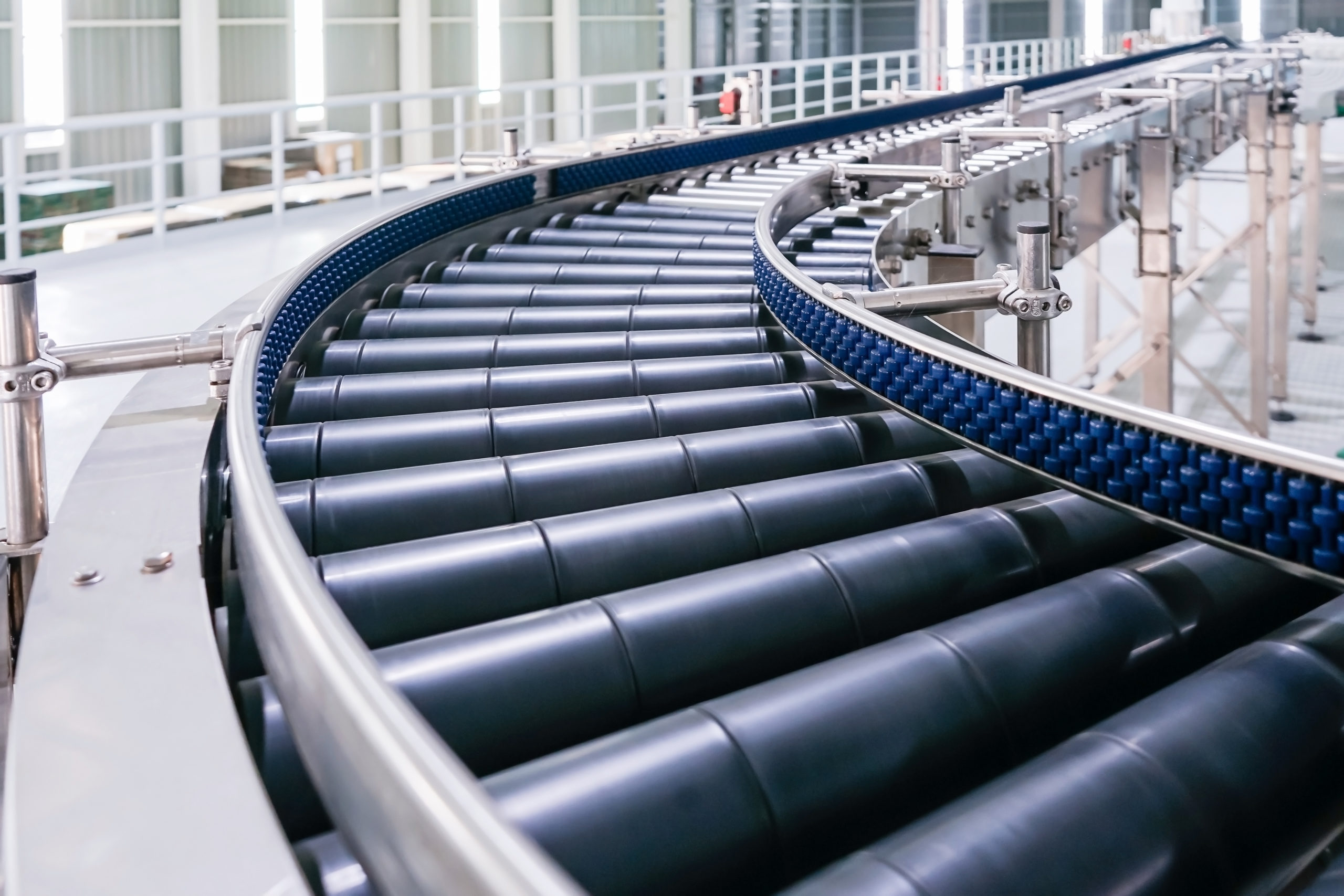Cable Conveyors vs. Regular Conveyors: A Comprehensive Guide to Safety and Efficiency
When moving materials from one place to another, conveyors play a vital role in many industries. However not all conveyors are created equal. Let’s dive into the comparison between cable conveyors and regular conveyors as well as belt conveyors, exploring the differences in safety and efficiency.
Table of Contents
Conveyors are fundamental in various industries, and used for transporting materials efficiently and safely. Whether moving goods in a factory, raw materials in a mine, or ingredients in a food processing plant, conveyors play an indispensable role.
Regular Conveyors
Regular conveyors, or belt conveyors, consist of a continuous rotating belt over two or more pulleys. They transport various materials over short to medium distances. The belt is usually made of rubber, PVC, or other flexible materials and driven by a motor.
They are common in manufacturing, mining, and packaging industries. They can be used for everything from transporting coal in a mining operation to moving packaged goods in a distribution center.
While regular conveyors are versatile and widely common, they may expose moving parts and require safety measures to prevent accidents. They may also be less suitable for transporting delicate or perishable items.
Cable Conveyors
Cable conveyors use cables to transport materials enclosed in tubes. This unique design offers several advantages over traditional conveyors. The tubes can be made from various materials, like steel or plastic, and the cables are typically driven by a motor.
Cable conveyors are especially valuable in industries where cleanliness and gentle handling are crucial, such as food processing, pharmaceuticals, and chemical production. Their enclosed design makes them suitable for transporting everything from coffee beans to pharmaceutical ingredients.
Cable conveyors provide enhanced safety due to their enclosed design and offer greater efficiency with fewer maintenance needs. However, they might require a more significant initial investment, though the long-term benefits often outweigh the initial costs.
Safety Considerations
Safety is paramount in any industry, especially when dealing with machinery that moves materials from one place to another. Conveyors must be designed and operated with care to ensure the well-being of the workers and the integrity of the products being transported.
- Regular conveyors can present some safety concerns. The exposed moving parts may cause injuries if not properly guarded, and there’s potential for spillage, leading to slip hazards,
- Workers can become entangled in the moving parts of a regular conveyor. Additionally, if materials spill off the belt, they can create slipping hazards on the work floor, increasing the risk of accidents,
- Cable conveyors are designed with safety in mind. The enclosed tube design minimizes the risk of injuries and spillage, making it a safer option for both workers and the environment.
- The tubes in cable conveyors completely encase the transported materials. This design minimizes spillage and prevents dust and other contaminants from escaping, thereby reducing health risks for workers.
- Cable conveyors are gentle on the materials they transport. This less aggressive handling reduces the likelihood of product damage, further enhancing safety and quality control.
Efficiency in Operation
Efficiency in conveyor operations is not just about moving materials quickly. It’s about doing so economically and efficiently. Both regular and cable conveyors have their advantages and drawbacks in efficiency.
- Regular conveyors are effective in transporting materials. But they might require frequent maintenance and consume more energy. This could affect overall efficiency.
- The design of regular conveyors may lead to higher energy consumption, particularly if the system isn’t optimized for specific materials. Inefficient operation can lead to wasted energy and increased costs,
- Regular conveyors can handle various materials. But adjustments might be needed to accommodate different sizes, weights, or types of materials. These adjustments can consume time and resources, impacting efficiency,
- Cable conveyors offer higher efficiency. With fewer moving parts and a sealed system, they require less maintenance and often consume less energy. This efficiency translates into cost savings over time.
- The design and fewer moving parts in cable conveyors mean less wear and tear. Maintenance needs are typically reduced, resulting in cost savings and less downtime.
- Cable conveyors offer energy efficiency in mind. The enclosed system minimizes friction, leading to less energy consumption and more sustainable operation.
Environmental Impact
Environmental responsibility is not just an ethical consideration but often a legal requirement. Conveyor systems, by their nature, can significantly impact the environment, depending on their design and operation.
Regular Conveyors: Environmental Risks
Spillage and dust emissions from regular conveyors might pose environmental risks. Proper handling and maintenance can mitigate these concerns.
Materials spilled from regular conveyors can contaminate the surrounding area, affecting soil and water quality. This risk is particularly about hazardous or toxic materials.
Dust emissions can be a significant concern with regular conveyors, particularly when handling powdery or fine materials. These emissions can contribute to air pollution and pose health risks to workers and nearby communities.
Regular conveyors can generate noise, which might become a concern in certain environments. Continued exposure to high noise levels can impact the well-being of workers and nearby residents.
Proper design, maintenance, and handling can significantly reduce these risks. Implementing spill guards, dust control systems, and noise reduction measures can contribute to a more environmentally friendly operation.
Cable Conveyors: Eco-friendly Design

Cable conveyors’ enclosed design reduces spillage and emissions, contributing to a more environmentally friendly operation.
These conveyors transport materials within enclosed tubes. This design significantly reduces the risk of spillage and dust emissions, minimizing environmental impact.
Cable conveyors often require less energy to operate, which reduces operational costs and decreases their carbon footprint, contributing to a greener operation.
The enclosed design of cable conveyors typically results in quieter operation, reducing noise pollution and its associated impact on workers and the community.
Some cable conveyors are constructed with recyclable materials, enhancing their environmental friendliness by promoting a more sustainable life cycle.
Cable vs Regular Conveyors
When choosing between cable and regular conveyors – belt conveyors, consider factors like safety, efficiency, applications, and environmental impact. Cable conveyors often stand out as a superior choice, offering enhanced safety, greater efficiency, and an environmentally friendly design.
What are Tubular Cable Conveyors?
Tubular cable conveyors are a type of conveyor system that uses tubes to enclose and transport materials. They consist of a series of tubes connected together, with cables or discs running inside the tubes to move the materials. This design provides a sealed and enclosed environment for efficient and safe material handling.
What are Rope Conveyor Systems?
Rope conveyor systems, also known as cable conveyor systems, are a type of material handling system that uses ropes or cables to transport materials. They typically consist of a series of ropes or cables suspended between pulleys or sheaves, which move the materials along the desired path. These systems are commonly used in industries such as mining, construction, and agriculture.

11+ years strategic communications, marketing, and project management experience. I am a trainer at StarWood Training Institute, focusing on online courses for project management professionals.











